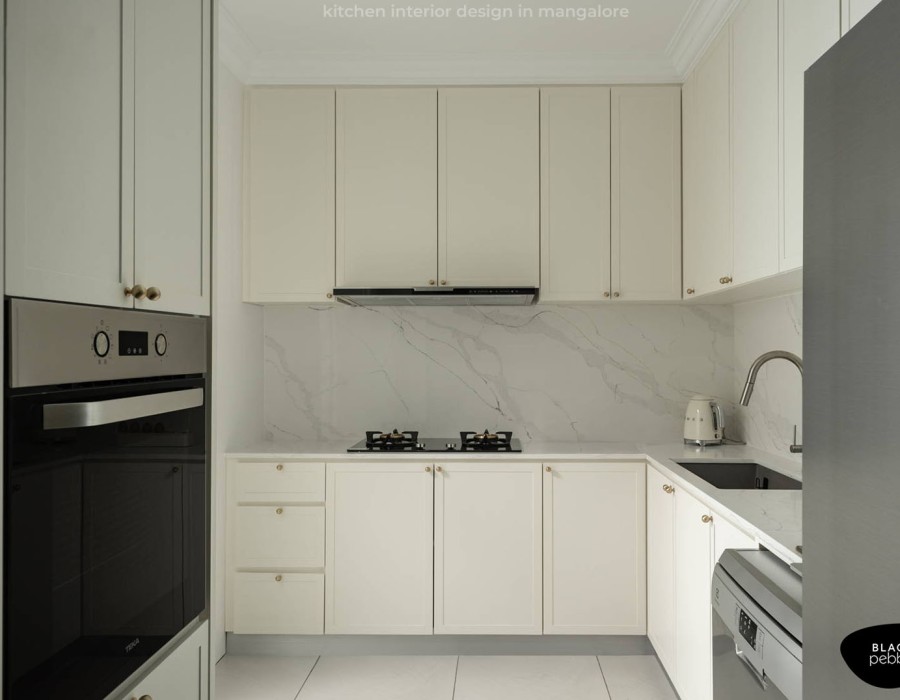Interior design is fundamentally about choices—countless decisions that shape how we experience our living spaces. From the selection of colours and textures to the arrangement of furniture and lighting, every element requires careful consideration. However, these decisions become particularly nuanced when designers must balance contemporary global trends with regional identity and local climate considerations. This delicate equilibrium is exemplified beautifully in coastal cities like Mangalore, where traditional sensibilities meet modern aspirations.
The Weight of Cultural Context in Design Decisions
The most compelling interior design projects emerge from thoughtful decision-making that honours both functionality and cultural resonance. In regions with strong vernacular traditions, designers face the perpetual challenge of respecting local heritage whilst embracing contemporary living standards. This tension is particularly evident when examining interiors in Mangalore, where the coastal climate, traditional Tulu and Konkani architectural influences, and modern urban lifestyle demands create a unique set of design parameters.
The decision to incorporate traditional elements—such as carved wooden panels reminiscent of heritage Mangalorean homes or terracotta accents that echo local pottery traditions—versus adopting purely contemporary aesthetics reflects deeper questions about identity and belonging. Successful designers navigate these choices by understanding that authenticity need not mean replication; instead, it can involve reinterpreting traditional motifs through modern materials and techniques.
Kitchen Design: Where Function Meets Cultural Practice
Perhaps nowhere is the intersection of tradition and modernity more pronounced than in kitchen design. The kitchen serves as the heart of Indian homes, where family gathering, cooking practices, and cultural rituals converge. When approaching kitchen interior design in Mangalore, designers must consider not only universal principles of efficiency and aesthetics but also specific regional cooking practices and family dynamics.
The decision to incorporate a traditional chulah alongside modern cooking surfaces, for instance, reflects an understanding that many Mangalorean families still value the flavours achieved through traditional cooking methods. Similarly, the choice to design separate wet and dry kitchen areas acknowledges the reality of Indian cooking styles, which often involve significant use of spices, oils, and varied cooking techniques that can impact the entire home environment.
Climate considerations further complicate these decisions. Mangalore's humid coastal environment demands materials and finishes that can withstand moisture whilst maintaining their aesthetic appeal. The decision to use natural stone countertops over certain laminates, or to incorporate proper ventilation systems, reflects an understanding that beautiful design must also be practical and enduring.
The Psychology of Spatial Decisions
Interior design decisions extend beyond mere aesthetics to encompass psychological comfort and behavioural patterns. The choice of an open-plan layout versus traditional compartmentalised spaces, for example, reflects changing family dynamics and lifestyle preferences. Many contemporary interiors in Mangalore showcase this evolution, where families opt for more fluid living arrangements that facilitate both privacy and togetherness.
Colour decisions carry particular weight in this context. The choice between cooling blues and greens that complement the coastal environment versus warmer earth tones that reflect traditional preferences can significantly impact the emotional atmosphere of a space. Successful designers understand that these decisions must align with the inhabitants' personalities and daily routines, not merely current design trends.
Material Choices and Sustainability Considerations
Contemporary interior design increasingly grapples with sustainability concerns, adding another layer to the decision-making process. The choice between imported materials and locally sourced alternatives reflects not only budgetary considerations but also environmental consciousness and support for local artisans and industries.
In Mangalore's context, this might involve choosing locally quarried stones over imported marble, or incorporating handwoven textiles from regional craftspeople rather than mass-produced fabrics. These decisions support both environmental sustainability and cultural preservation whilst often providing unique aesthetic qualities that cannot be replicated through industrial production.
Technology Integration and Future-Proofing
Modern interior design must also account for rapidly evolving technology integration needs. The decision of where to place charging stations, how to conceal wiring for smart home systems, and whether to incorporate automated lighting and climate control reflects anticipation of future living patterns. These choices require designers to balance current needs with predicted technological developments whilst maintaining aesthetic coherence.
The Role of Professional Guidance in Decision-Making
The complexity of contemporary interior design decisions often necessitates professional guidance. Experienced designers bring not only aesthetic sensibility but also practical knowledge of materials, local suppliers, climate considerations, and building codes. They help clients navigate the overwhelming array of choices by establishing clear priorities and design objectives.
In regions like Mangalore, where local building practices and climate considerations play crucial roles, professional designers serve as cultural translators, helping clients make decisions that honour both their personal preferences and regional realities. Their expertise becomes particularly valuable in avoiding costly mistakes that might arise from choices that appear aesthetically pleasing but prove impractical in local conditions.
Conclusion: Embracing the Complexity of Choice
The art of interior design lies ultimately in making thoughtful decisions that balance multiple competing priorities: aesthetics and functionality, tradition and modernity, individual preference and cultural context, immediate needs and long-term durability. In regional contexts like Mangalore, these decisions carry additional weight as they contribute to the evolution of local design identity.
Successful interior design emerges not from avoiding these complex choices but from embracing them as opportunities for creative problem-solving. Each decision, from the grandest spatial arrangements to the smallest decorative details, contributes to spaces that are not merely beautiful but meaningful—environments that enhance daily life whilst reflecting the unique character of their place and people.
The most rewarding interior design projects are those where every choice feels both inevitable and surprising, where the final result appears effortless despite the countless decisions that shaped its creation. In this sense, interior design becomes not just about creating beautiful spaces, but about crafting environments that tell stories—of place, of people, and of the thoughtful decisions that brought them into being.





Comments